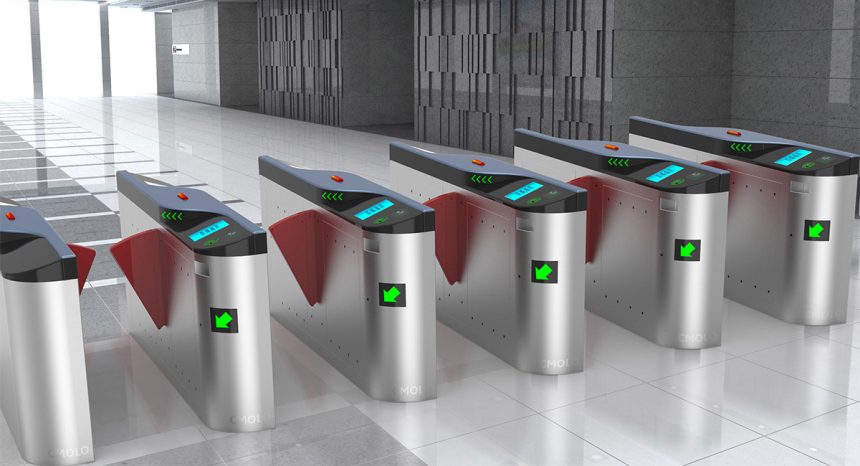The modern subway station is a bustling hub of activity. To ensure the safety and security of passengers, most subway stations have implemented the use of flap barriers to help manage crowds and inspect tickets. But why are these barriers so popular? What makes them a better option than other types of ticket inspection systems? Let’s take a look at some of the benefits of using flap barriers in subway stations.
1. Faster Ticket Inspection
One major advantage that flap barriers offer is faster ticket inspection. Unlike turnstiles, which require passengers to insert their tickets into a slot before being allowed entry, flap barriers require no ticket insertion and can be opened simply by holding up the ticket for inspection. This means that large crowds can pass through quickly and easily with minimal disruption. Additionally, because there is no need for passengers to wait for their tickets to be scanned, there are fewer queues and delays when entering or exiting the station.
2. Enhanced Security
Flap barriers also provide enhanced security compared to traditional turnstiles or gates. They function as both a physical barrier and an electronic monitoring system, allowing station staff to keep track of passenger numbers in real-time. This combination of physical and electronic surveillance helps to deter potential criminal activity while simultaneously helping to identify any unauthorized access points or breaches in security.
3. Improved Safety
Flap barriers are also beneficial when it comes to safety, especially for children and the elderly. All flap barriers are equipped with infrared sensors and anti-pinch mechanisms that prevent the barrier from closing once a person has entered or left the station, ensuring that no one gets stuck in the door.
4. Increased Capacity
Another important benefit of using flap barriers in subway stations is increased capacity. The wide passageways created by the flap barrier allow passengers with luggage or strollers to pass through more quickly and easily than with turnstiles, enabling the station to handle larger numbers of passengers. Additionally, the use of electronic sensors prevents overcrowding in the station by automatically slowing down passengers when the maximum capacity has been reached. This ensures that passengers always have a safe and comfortable journey.
5. Improved Accessibility
Moreover, flap barriers also provide improved accessibility for passengers with mobility issues or disabilities. The wide passageways created by these barriers make it easier to enter and exit the station, and the automatic opening system eliminates barriers that would otherwise be difficult to navigate. This improved accessibility also ensures passengers with special needs are treated with respect and dignity when entering or leaving the station.
6. Cost Efficiency
Flap barriers are relatively inexpensive to purchase and maintain, making them an ideal solution for subway stations that need to stay within budget. They also require fewer staff members to operate, reducing labor costs and increasing overall efficiency. Additionally, since they can be adjusted to fit the height of each passenger, there is no need to purchase additional equipment such as ramps or elevators. This helps to save even more money in the long run. By using flap barriers, subway stations can lower their overall costs while still providing a safe and secure environment for all of their passengers.
7. Easy Installation and Maintenance
Finally, they are relatively easy to install and maintain compared with other types of gate systems. Unlike turnstiles, which require complex wiring and hardware installation, flap barriers do not require much additional equipment beyond what is needed for the gates themselves – making them simpler and more cost effective to install and maintain over time. Flap barriers are becoming increasingly popular in subway stations due to their ease of installation, maintenance, enhanced security features, as well as their ability to speed up ticket inspections significantly compared with traditional turnstiles or gates. While there is no one-size-fits-all solution when it comes to crowd control and ticketing systems, flap barriers offer many advantages over other options – making them an ideal choice for many subway stations around the world.















